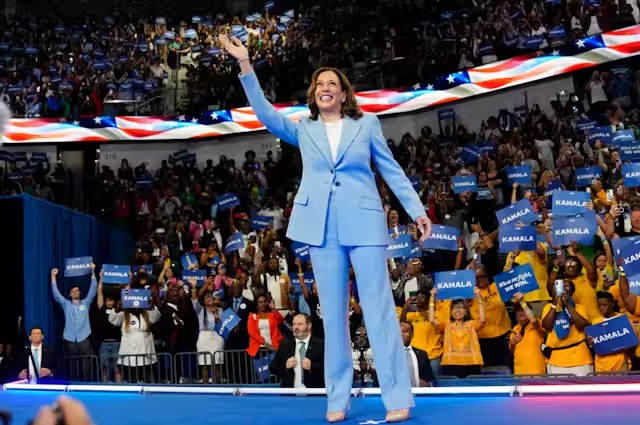by Adrian Beaumont, The University of Melbourne
The United States presidential election will be held on November 5. Election analyst Nate Silver’s national poll aggregate has Democratic nominee and current vice president Kamala Harris leading Republican nominee and former president Donald Trump by 45.5–44.1%, with 5.0% for Robert F. Kennedy Jr.
When President Joe Biden withdrew from the contest on July 21, Trump had a 45.2–41.2% lead over Biden, so Harris has improved on Biden’s net margin by 5.4 points. By the election, Biden will be almost 82, Trump is now 78 and Harris will be 60.
Silver’s model gave Trump a 73% chance to win the election when Biden was his opponent. When the Harris vs Trump model was launched last Tuesday, Trump had a 62% chance to win. The model now gives Harris very slight favoritism, with a 50.5% chance to win.
The US president isn’t elected by the national popular vote, but by the Electoral College, in which each state receives electoral votes based mostly on population. Almost all states award their electoral votes winner takes all, and it takes 270 electoral votes to win (out of 538 total).
Silver’s model gives Harris a 66% chance to win the popular vote, compared to a 50.5% chance in the Electoral College. The model indicates Harris needs to win the popular vote by at least two points to be the favorite to win the Electoral College.
It’s still very close to a 50–50 chance for either Harris or Trump, but Harris has greatly improved on the situation under Biden. Switching from Biden to Harris was clearly the correct decision for Democrats.
In economic data, the unemployment rate rose 0.2% to 4.3% in July, the highest it has been since October 2021, when the US was recovering from the COVID recession. A weaker economy is likely to assist Trump.
Adrian Beaumont, Election Analyst (Psephologist) at The Conversation; and Honorary Associate, School of Mathematics and Statistics, The University of Melbourne
This article is republished from The Conversation under a Creative Commons license. Read the original article.
